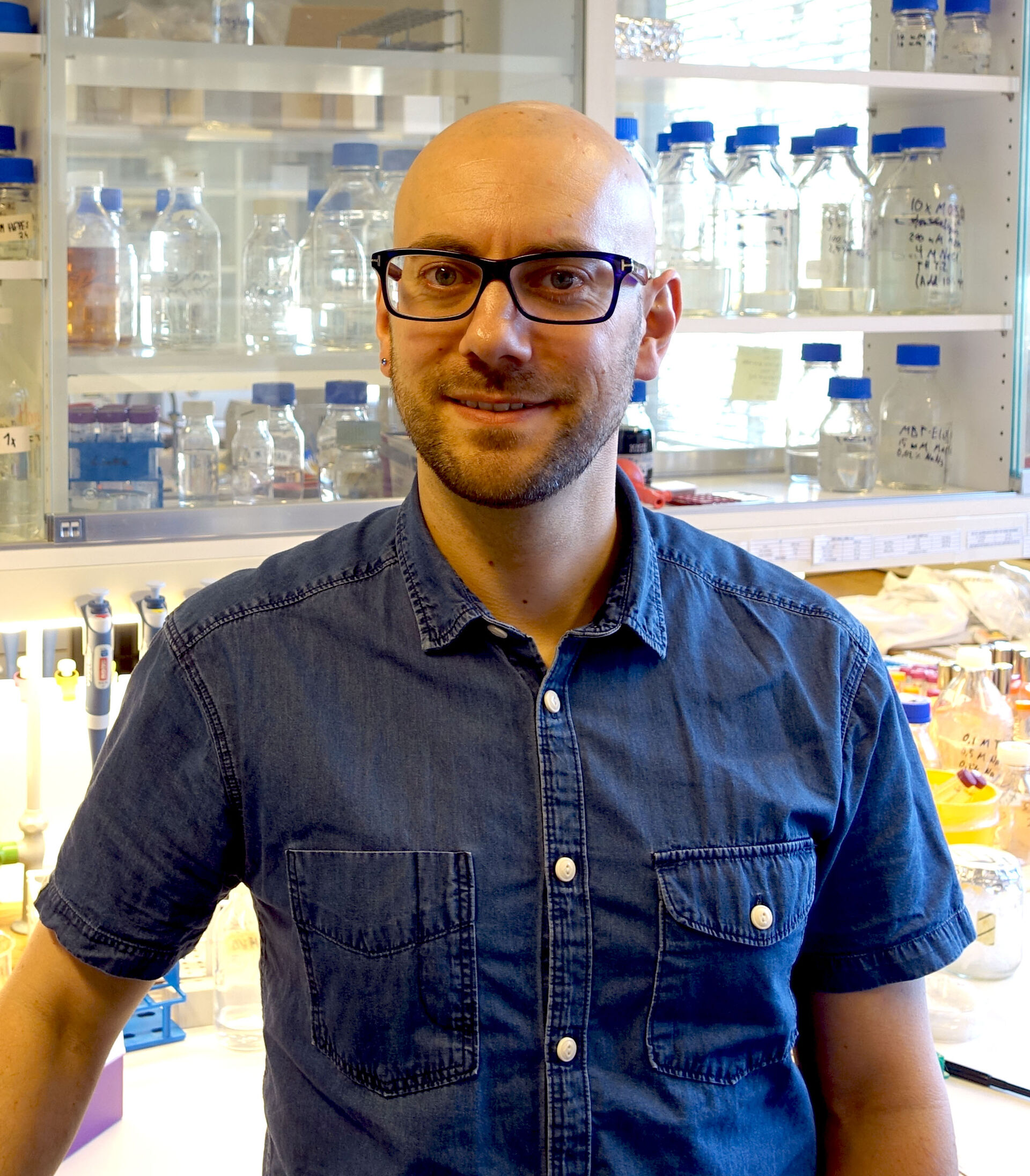Research interests:
Bacterial virulence and protein secretion: My main area of interest is bacterial pathogenesis, focusing especially on adhesion and other virulence functions mediated by autotransporter proteins of Gram-negative bacteria. These proteins are large, non-fimbrial rod-like surface molecules which mediate adhesion to both biotic and abiotic surfaces, but also promote autoagglutination and serum resistance, and yet others have enzymatic activities. These proteins are also self-contained secretion systems (hence the name autotransporter), in that they are able to transport the extracellular portion of the protein autonomously across the outer membrane. The long-term aim of this research is to understand three aspects of autotransporter-mediated pathogenesis: 1) the mechanisms and mechanics of the autotransporter virulence functions, 2) the biogenesis of autotransporters and 3) regulation of virulence functions and gene expression. All three steps are potential sites for intervention to prevent adhesion to host tissues, and thus host colonisation and infection. Understanding the molecular mechanisms leading to adhesion could allow for the rational design of novel antimicrobials. To understand these phenomena, I use a wide array of different techniques, including classical microbiological methods, molecular genetics, recombinant protein production and purification (including membrane proteins), microplate-based adhesion assays (ELISA and similar), biochemical methods, biophysical techniques (isothermal titration calorimetry, surface plasmon resonance, spectroscopic techniques), structural biology methods (protein crystallisation, X-ray crystallography, nuclear magnetic resonance spectroscopy), microscopy and bioinformatics.
Biological nanoparticle formation: Under certain conditions, bacteria are able to reduce heavy metal ions into metallic nanoparticles at the cell surface. These nanoparticles have unusual electronic, magnetic and catalytic properties that are of interest in industry (electronics, chemical catalysts). I aim to find out how the bacteria form these nanoparticles and which biochemical pathways are involved.
Tags:
Bacteria,
autotransporter,
adhesion,
protein secretion
Selected publications
Bacterial adhesion:
Saragliadis A, Trunk T, Leo JC: Producing Gene Deletions in Escherichia coli by P1 Transduction with Excisable Antibiotic Resistance Cassettes. J Vis Exp.(139), e58267. doi:10.3791/58267
Leo JC, Linke D (2018): A unified model for BAM function that takes into account type Vc secretion and species differences in BAM composition. AIMS Microbiol. 4(3): 455-68. http://dx.doi.org/10.3934/microbiol.2018.3.455
Trunk T, Khalil HS, Leo JC (2018): Bacterial autoaggregation. AIMS Microbiol. 4(1): 140-164. https://doi.org/10.3934/microbiol.2018.1.140
Wrobel A, Ottoni C, Leo JC, Gulla S, Linke D (2018). The repeat structure of two paralogous genes, ruckeri Invasin (yrInv) and a “Y. ruckeri Invasin-like molecule”, (yrIlm) sheds light on the evolution of adhesive capacities of a fish pathogen. J Struct Biol. 210(2): 171-83. https://doi.org/10.1016/j.jsb.2017.08.008
Meuskens I, Michalik M, Chauhan N, Linke D, Leo JC (2017): A new strain collection for improved expression of outer membrane proteins. Front Cell Infect Microbiol. 74: 464. https://doi.org/10.3389/fcimb.2017.00464
Mühlenkamp MC, Hallström T, Autenrieth IB, Bohn E, Linke D, Rinker J, Riesbeck K, Singh B, Leo JC, Hammerschmidt S, Zipfel PF, Schütz MS (2016): Vitronectin binds to a specific stretch within the head region of Yersinia adhesin A and thereby modulates Yersinia enterocolitica host interaction. J Innate Immun. 9(1):33-51. https://doi.org/10.1159/000449200
Leo JC, Oberhettinger P, Yoshimoto S, Udatha DBRKG, Morth JP, Schütz M, Hori K, Linke D (2016): The secretion of the intimin passenger domain is driven by protein folding. J Biol Chem. 291(38):20096-112. http://www.jbc.org/content/291/38/20096
Chauhan N, Wrobel A, Skurnik M, Leo JC (2016): Yersinia adhesins: an arsenal for infection. Proteomics Clin Appl. 10(9-10):949-963. http://onlinelibrary.wiley.com/doi/10.1002/prca.201600012/full
Leo JC, Oberhettinger P, Schütz M, Linke D (2015): The inverse autotransporter family: Intimin, Invasin and related proteins. Int J Med Microbiol., 305(2): 276-82. https://doi.org/10.1016/j.ijmm.2014.12.011
Mühlenkamp M, Oberhettinger P, Leo JC, Linke D, Schütz M (2015): Yersinia adhesin A (YadA) – beauty and beast. Int J Med Microbiol., 305(2): 252-8. https://doi.org/10.1016/j.ijmm.2014.12.008
Oberhettinger P, Leo JC, Linke D, Autenrieth IB, Schütz M (2015): The inverse autotransporter Intimin exports its passenger domain via a hairpin intermediate. J Biol Chem., 290(3): 1837-49. http://www.jbc.org/content/290/3/1837.full
Leo JC, Oberhettinger P, Chaubey M, Schütz M, Kühner D, Götz F, Autenrieth IB, Coles M, Linke D (2015): The Intimin periplasmic domain mediates dimerisation and binding to peptidoglycan. Mol Microbiol., 95(1): 80-100. http://onlinelibrary.wiley.com/wol1/doi/10.1111/mmi.12840/full
Nanoparticles:
Shen X, Bonde JS, Kamra T, Bülow L, Leo JC, Linke D, Ye L (2014): Bacterial imprinting at Pickering emulsion interfaces. Angew Chem Int Ed Engl., 53(40):10687-90. http://onlinelibrary.wiley.com/doi/10.1002/anie.201406049/full
Published
Apr. 8, 2015 1:05 PM
- Last modified
Sep. 3, 2018 11:28 AM
